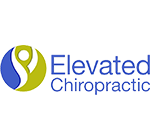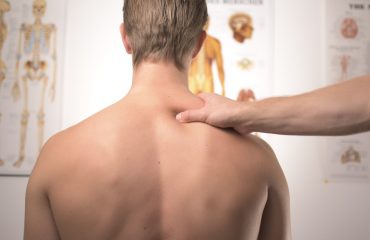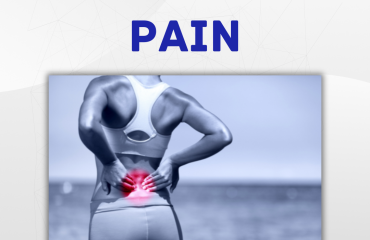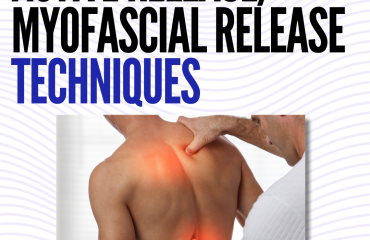Imagine it…the California sun is beating down on your forehead. High pitched squeaks emit from your Hoka tennis shoes as you dart around the pickleball court. Your pickleball game is on fire🔥 but you’re tied up with your opponent. This is your chance; this next shot wins the game. You race across the pavement, swing your arm up to hit the ball, and OUCH. Severe pain debilitates your elbow, and you miss your shot. Devastating! Victory was so close! How can you fix your elbow pain? Your pickleball season can’t be over! On or off the court, elbow pain is anything but funny.

The Elbow

The elbow joint consists of three different joints supported by multiple ligaments, tendons, and muscles! Crazy huh? Let’s break down the anatomy.
The Elbow Joint(s)
The elbow joint is a synovial joint made up of the humerus, radius, and ulna. The elbow performs two types of movements, hinging and pivoting. The humeroulnar joint is responsible for movements (flexion, extension, supination, and pronation) of the humerus and the ulna, while the humeroradial joint is responsible for movements of the humerus and radius. The proximal radioulnar joint is responsible for movements between the radius and ulna.
The Ligaments
The elbow joint is supported by several robust ligaments, including the medial collateral ligament (MCL) and the lateral collateral ligament (LCL). Additionally, the Annular Ligament and the Arcuate (Osborne’s) Ligament are crucial for elbow stability.
Medial Collateral Ligament (MCL)
Situated on the inner (medial) side of the arm, the MCL connects the humerus to the ulna. It is triangular in shape and composed of three distinct components: the anterior oblique ligament, the posterior oblique ligament, and the transverse ligament. The MCL plays a vital role in stabilizing the inner elbow, preventing excessive valgus (inward) movement.
Lateral Collateral Ligament (LCL)
Positioned on the outer aspect of the arm, the LCL connects the humerus to the radius. It is made up of three smaller ligaments and functions to stabilize the outer elbow, preventing excessive varus (outward) movement.
Arcuate (Osborne’s) Ligament
This ligament connects the two heads of the Flexor Carpi Ulnaris muscle and forms the roof of the cubital tunnel, through which the ulnar nerve passes.
Annular Ligament
The Annular Ligament encircles the radius and ulna, serving to stabilize the radioulnar joint.
The Muscles
Muscles of the arm and forearm cross over the elbow to assist the elbow joint with different movements. The muscles that that originate at the elbow do not provide must assistance with the elbow’s actions compared to the muscles crossing the joint. These muscles help move, stabilize, and protect the elbow. Here’s a breakdown of the elbow muscle actions.
Flexion
Biceps Brachii (secondary action), Brachioradialis, Brachialis
Extension
Triceps Brachii and Anconeus
Supination (palms up)
Biceps Brachii (primary action).
Pronation (palms down)
Pronator Teres
The muscles originating at the elbow joint assist with stabilizing the joint from excess valgus (lateral) and varus (medial) translation. Muscles that protect the elbow from excess valgus forces by providing varus force are the Flexor Digitorum Superficialis, Flexor Carpi Ulnaris, Flexor Carpi Radialis, and Pronator Teres. The muscles that stabilize the elbow from excessive varus forces by initiating valgus stability are the Extensor Digitorum Communis, Extensor Carpi Radialis Brevis/Longus, Anconeus, and Extensor Carpi Ulnaris.
The Nerves

Three primary nerves traverse the elbow region: the ulnar nerve, the radial nerve, and the median nerve. These nerves extend down the arm and provide sensory and motor innervation to various muscles of the upper extremity.
Ulnar Nerve
This nerve follows the inner aspect of the arm, progressing from anterior to posterior before reaching the cubital tunnel and the ulnar nerve groove. The ulnar nerve is susceptible to compression during elbow flexion, which may lead to symptoms such as numbness and tingling in the forearm, the medial side of the hand, and the ring and pinky fingers.
Median Nerve
The median nerve descends along the anterior side of the elbow, supplying motor and sensory innervation to the muscles of the forearm and hand. Compression of the median nerve can result in numbness and tingling in the first through third fingers.
Radial Nerve
Originating from the inner aspect of the humerus, the radial nerve wraps around the posterior and lateral aspects of the arm before passing laterally through the elbow and entering the radial groove of the humerus. This nerve innervates several muscles, including the brachialis (lateral portion), supinator, anconeus, brachioradialis, and triceps brachii. Entrapment of the radial nerve may cause numbness and tingling in the forearm, the posterior side of the hand, and the first through third digits.
OUCH! What Causes Elbow Pain?!

Let’s talk about the different types and causes of elbow pain that may affect your pickleball performance.
GOLFERS ELBOW AKA MEDIAL EPICONDYLITIS
Golfer’s elbow may occur without even going to the driving range. With Golfer’s Elbow, the tendons on the medial(inner) elbow become inflamed. The type of movements that cause Golfer’s Elbow are repetitive gripping or wrist flexion motions. Manual labor, racket sports, and golfing are common activities that cause Golfer’s Elbow.
TENNIS ELBOW aka LATERAL EPICONDYLITIS
Tennis elbow is categorized by pain that accumulates on the outer (lateral) side of the elbow. The condition is a result of overuse of the muscles and tendons of the forearm. Repetitive wrist extension and gripping movements are the most common causes of tennis elbow, but tennis elbow can occur in patients even if they are not tennis players.
OLECRANON BURSITIS
Olecranon Bursa is a fluid-filled sac located at the tip of the elbow. Repetitive pressure and direct trauma to the Olecranon Bursa causes the bursa to become inflamed. Tenderness, swelling, and pain are common symptoms of Olecranon Bursitis. Developing a fever or if the area is red and warm to the touch may be due to an infection.
FRACTURES
Direct trauma, falls, or high-impact accidents to the radius, ulna, or humerus bones may cause fractures. Fractures result in severe pain, swelling, bruising, and restricted range of motion to the elbow.
SPRAINS OF THE MEDIAL(ULNAR)/LATERAL (RADIAL) COLLATERAL LIGAMENTS
Hyperextension (straightening the elbow too far), repetitive stress, or high-impact injuries may cause sprains to the Medial (Ulnar) Collateral or Lateral (Radial) Collateral Ligaments of the elbow. Medial (Ulnar) Collateral Ligament sprains are often caused by poor throwing techniques in athletes. Lateral (Radial) Collateral Ligament injuries are typically associated with fractures or dislocations of the elbow. Injuries to the elbow ligaments may cause instability, pain, and swelling.
ARTHRITIS
Arthritic changes from wear and tear, autoimmune disorders such as rheumatoid arthritis, or other underlying medical conditions may cause pain, stiffness, and swelling in the elbow joints.
NERVE COMPRESSION SYNDROMES
Nerve compression syndromes such as cubital tunnel syndrome and radial tunnel syndrome may cause pain and tingling/numbness in the forearm, hand, and fingers. Cubital tunnel syndrome is caused when the ulnar nerve is compressed in the elbow. Radial Tunnel Syndrome occurs when the radial nerve in the elbow is compressed.
OSTEOCHONRITIS DISSECANS
Osteochondritis Dissecans occurs when a fragment of cartilage or underlying bone within the elbow becomes detached. Detachment of the bone or cartilage causes pain, joint popping/locking, swelling, and joint restrictions. This condition is common in young athletes or individuals who have repetitive joint stress.
Treat Yourself!
Help your elbow pain from home
It’s important to be properly evaluated by a professional to determine the root cause of your elbow pain but home care may help your symptoms before your appointment.
Golfer’s/Tennis/Pickleball Elbow
- Rest: Avoid/minimize gripping, repetitive movements, and lifting
- Ice: In the early phases of pain
- Check Your Racket: Make sure any rackets you use are the appropriate lengths for your body.
- Switch It Up: Use your non-dominant hand for activities to reduce overuse.
- Bracing: There are different types of braces available in stores and online for providing support to the elbow.
- Stretches: Stretching the forearm muscles may help alleviate your elbow pain.
- Corrective Exercises: Wait to start strength training until forearm stretches become pain-free.
Olecranon Bursitis
Olecranon Bursitis often clears up on its own but sometimes interventions are necessary. Aspiration of fluid, ultrasound, or antibiotics may be necessary depending on your condition.
Some self-care options to try include:
- RICE: Rest, Ice, Compression, and Elevate
- Wear an elbow pad to protect the elbow
- Avoid: Activities that put pressure on the elbow
- Immobilize the elbow and seek your primary care physician/orthopedist
Arthritis
Ways to help relieve arthritis symptoms include:
- Heat/Ice may help with pain relief. Heat will help relax the muscles and ice helps with inflammation
- Gentle Range of Motion exercises help loosen stiff joints
- Rest
- Avoid activities that aggravate pain when having flare-ups
- Splint/Brace the elbow to provide support and protect the elbow from excessive movement
Cubital Tunnel Syndrome
- Rest: Avoid movements such as elbow flexion that aggravate the elbow
- Splinting or foam bracing the elbow at night
- Wearing an elbow pad
- Nerve Gliding exercises
Radial Tunnel Syndrome
- Rest from activities that aggravate your symptoms
- Wearing wrist/elbow splints to reduce compression of the radial nerve
- Nerve Gliding Exercises
- Icing the area
Here are examples of the Radial and Ulnar(cubital) Nerve Glide exercises:

UCL/RCL Ligament Sprains
- RICE: Rest, Ice, Compress, Elevate
- Start mobility and strengthening exercises when pain permits
Osteochondritis Dissecans
Osteochondritis Dissecans may need surgery. The following home care options may help with stable Osteochondritis Dissecans conditions:
- Rest
- Avoid activities that are high in intensity
- Rehabilitation/Corrective Exercises
Make sure you are evaluated properly by one of us in the clinic or other another healthcare professional to determine the underlying cause of your elbow pain. Imaging or referrals may be needed depending on your exam findings. We can assist with elbow pain by using soft tissue modalities, elbow adjustments (if indicated), and prescribing appropriate rehab exercises for your condition.
If you have any questions or concerns about elbow pain, let us know! We are happy to help you return to the pickleball court!

References:
Card RK, Lowe JB. Anatomy, Shoulder and Upper Limb, Elbow Joint. [Updated 2023 Jul 24]. In: StatPearls [Internet]. Treasure Island (FL): StatPearls Publishing; 2024 Jan-. Available from: https://www.ncbi.nlm.nih.gov/books/NBK532948/




